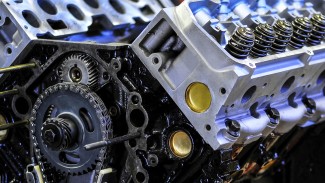Electric motors are America’s largest electricity-consuming end use and a success story for energy efficiency
Electric motors convert electric power to useful mechanical energy and consume more electricity than any other end use in the United States. Because more than half of all U.S. electricity flows through them, even modest improvements in their design and operation can pay tremendous dividends. The past three decades have seen significant efficiency improvements in motors due to market transformation programs and motor product testing and standards in North America and worldwide.
The primary focus of motor efficiency improvements is now shifting to motor-driven systems. Up to a fourth of U.S. electricity consumption can be saved by optimizing the performance of electric motors and their associated wiring, power-conditioning equipment, controls, and transmission components. These networks of devices are also known as motor systems. Over the past decade, the ACEEE-led Extended Motor Product Label Initiative has developed voluntary performance labels for motor-driven products such as pumps, fans, blowers, and air compressors. This initiative involves NEMA, the Air Movement and Control Association International, Compressed Air & Gas Institute, Hydraulic Institute, and Northwest Energy Efficiency Alliance. In 2017, the Hydraulic Institute launched its Pump Energy Rating program, which includes an energy efficiency performance metric, a comparative product label, a test protocol for hydraulic pumps, a product performance certification, a testing laboratory certification, and a product performance database.
We now see an increasing focus on applying the system-optimizing power of intelligent efficiency to broader end-use systems—which include numerous motors—through market solutions, such as grid-interactive efficient buildings and smart manufacturing, that take advantage of the next generation of smart motor technologies.

